Teaching kids how to use scissors and exploring scissor skills is one of my favorite things to work on as a school-based Occupational Therapist. There are so many creative ways to address the skills needed for accuracy in cutting with a pair of scissors. Today, I’m sharing everything you need to know about cutting with scissors. I’ve got all of the skills a child need in order to be successful. I’ve got great ways to practice teaching your child to cut on lines.
AND, I’ve got a top secret to share about teaching kids to cut with scissors; Something that will make practicing cutting with scissors frugal and fun. My secret weapon in teaching kids to cut on the lines? It’s wrapping paper! Gift wrap makes the best scissor practice tool because you can get a huge roll for an inexpensive price. Hit up dollar stores and grab the after season and get ready to snip, snip, snip your way to cutting shapes on lines. This is your creative Crash Course on teaching kids to cut with scissors!
Want to know more about functional skills like scissor use? Read more here!
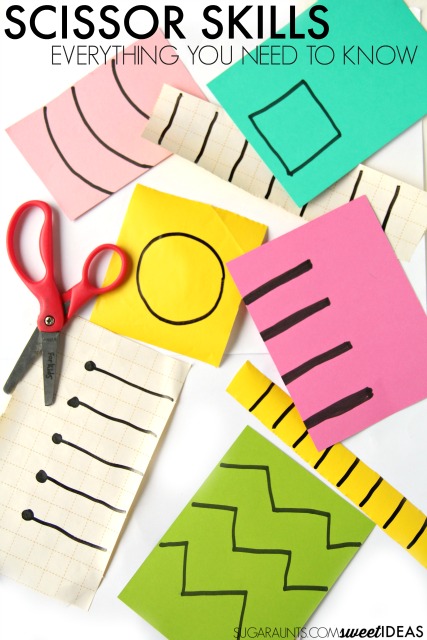
Teach Kids to Cut with Scissors (A Crash Course)
Full disclosure: This post contains affiliate links.
There are many components that go into cutting with scissors. These are the skill that kids need to master or be developing as they pick up a pair of scissors and can cut a shape. Using scissors to cut is a developmental progression of skill. And by that, I mean that as children progress in their development, they achieve more skill and accuracy. Kids need to gain better control of fine motor and visual perceptual skills as they grow and develop and with that development, comes better use of scissors. A child with deficits in any of the skill areas needed for using scissors will have difficulty with progression of typical scissor use development.
In this crash course, I’m going to share the skill components that a child needs to cut with scissors and various steps of cutting accuracy. Not included in this crash course are the developmental ages and stages of scissor use. That blog post will come at another time!
Skills a child needs to cut with scissors
These are the skill areas that a child needs in order to initiate scissor use and develop their progression toward successfully cutting multiple angled shapes:
Fine Motor Skills Needed for Scissor Use: From dexterity to graded precision, using scissors requires fine motor use skills for scissor use.
- Prerequisite skills: Before a child can effectively use scissors in a functional manner, prerequisite skills are essential. These are the functional skills that babies, toddlers, and preschoolers practice and achieve to learn graded muscle movements. Read more about prerequisite skills here.
- Open Thumb Web Space: Opening and closing the thumb against the fingers positions the thumb in abduction. Abduction and adduction are required to open and close the scissor’s blades. If a child is not able to open and close their thumb due to physical deficits or weakness, they will not be able to cut with typical scissors. There are many modified versions of scissors out there to assist with this area. Read more about open thumb web space here.
- Hand Strength: Cutting with scissors requires strength. The first stage of this is snipping paper. Children may complain of hand fatigue, not be able to cut thick paper such as construction paper, or may cut paper with short snips of the scissors. A gross hand grasp is needed for endurance in scissor use. Looking for ways to build hand strength? Try these creative activities.
- Visual Motor Skills: Also called hand-eye coordination, visual motor skills are our ability to position and use our hands in activities that are guided by our vision. Read more about visual motor skills here.
- Visual Tracking: In order to follow a line with scissors, a person must use visual tracking as they move their scissors along the line. Without this skill, a child will show poor line accuracy and may cut through shapes or across lines multiple times. Read more about visual tracking here.
- Bilateral Hand Coordination: This is a skill that is required for so many self-care and functional tasks. Using scissors to cut a shape is a functional task that requires both hands working together in a fluid manner. The hands are doing different tasks during the activity of cutting with scissors but both know what the other is doing without the child looking at either hand constantly. This manner of fluid activity is a mechanism of the brain as both hemispheres communicate in an efficient manner. In scissor skill activities, one hand must hold the scissors as the non-dominant hand holds and rotates the paper. Read more about bilateral coordination here.
-
- Hand Dominance: Related to bilateral hand coordination, is hand dominance in scissor use. A child need an established hand dominance in order to develop fine motor skills that are needed for accuracy with scissor use. If a child continues to switch hands, there are scissors that can be used with either hand on the market, however, the child will not develop accuracy and fluid scissor cuts as easily with out an established dominant hand. Read more about hand dominance here.
Try THESE scissors for kids who have a left-right confusion or undefined hand dominance.
Line Accuracy with Scissor Skills: Teaching Kids to cut on the Lines
Line accuracy when cutting with scissors is greatly dependent on position of the hand on the scissors, as well as all of the areas described above. Hand positioning and scissor grasp is a developmental progression and typical tearing of paper happens with certain positions. Typically, a child will developmentally go through certain stages in their scissor skills and as they progress, their accuracy will improve.
Help Kids Cut with Scissors on the Lines
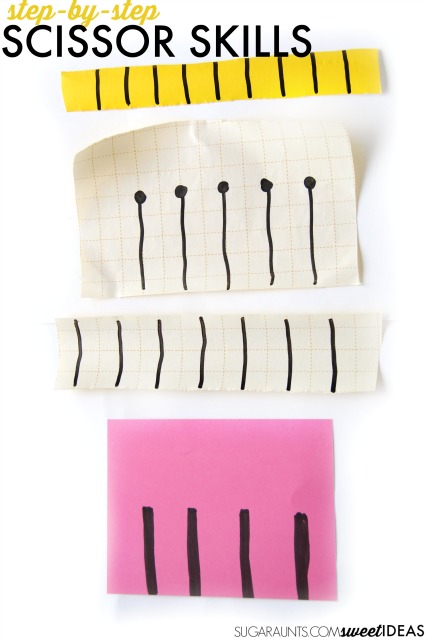
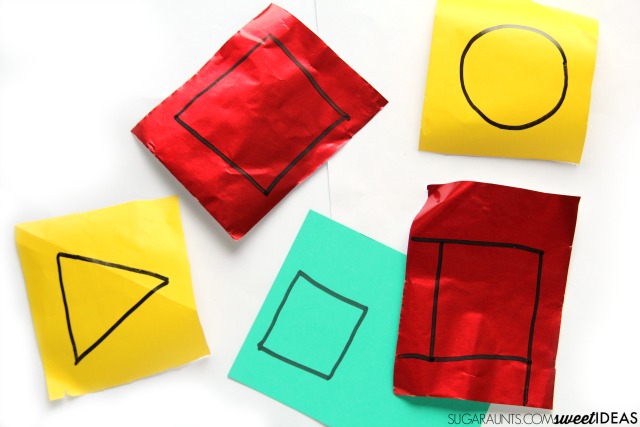
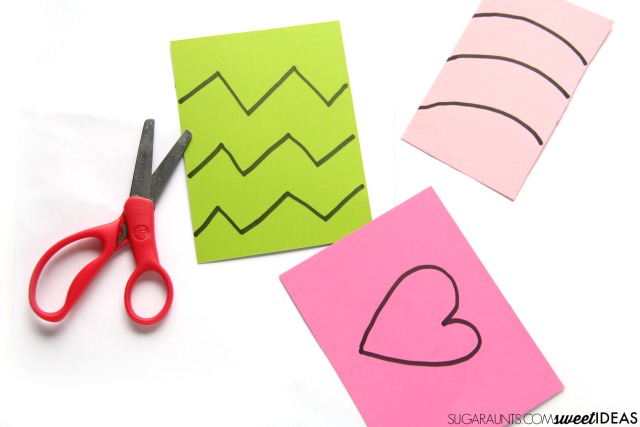
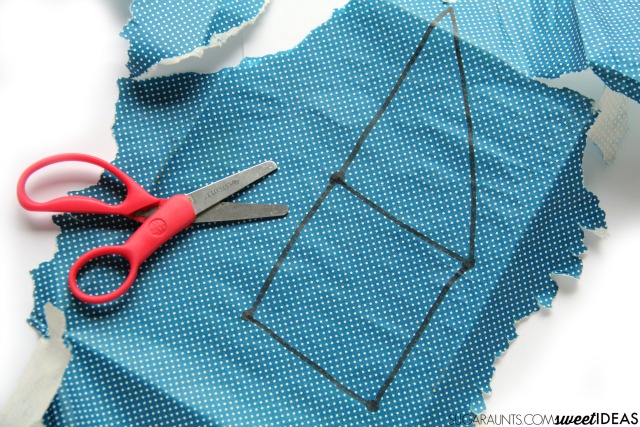
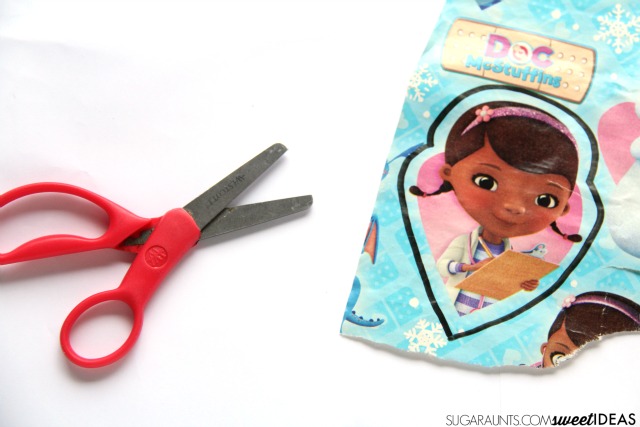
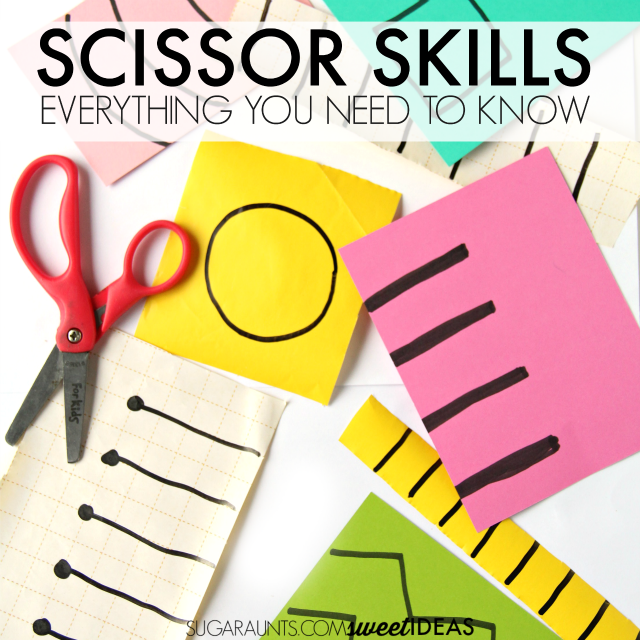

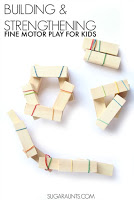

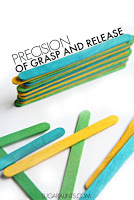

- Visual Tracking Tips and Tools
- Homemade Lacing Cards
- Hand Strengthening Building Activity
- Open Thumb Web Space Activities and Homemade Fuzzy Beads
- Precision in Grasp and Release of Fine Motor Skills
- Creative Scissor Skills Practice
- Crepe paper scissor practice
Working on fine motor skills, visual perception, visual motor skills, sensory tolerance, handwriting, or scissor skills? Our Fine Motor Kits cover all of these areas and more.
Check out the seasonal Fine Motor Kits that kids love:






Or, grab one of our themed Fine Motor Kits to target skills with fun themes:
- Frogs Fine Motor Kit
- Unicorns Fine Motor Kit
- Vehicles Fine Motor Kit
- Apple Fine Motor Kit
- Back to School Kit
- Sports Fine Motor Kit
- Outer Space Fine Motor Kit
- Fairytale Fine Motor Kit
- Plus more in our shop!
Want access to all of these kits…and more being added each month? Join The OT Toolbox Member’s Club!


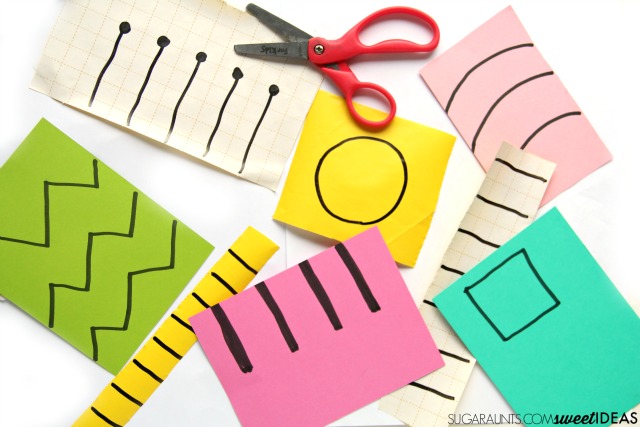





1 thought on “Scissor Skills Crash Course (with Gift Wrap!)”
Comments are closed.